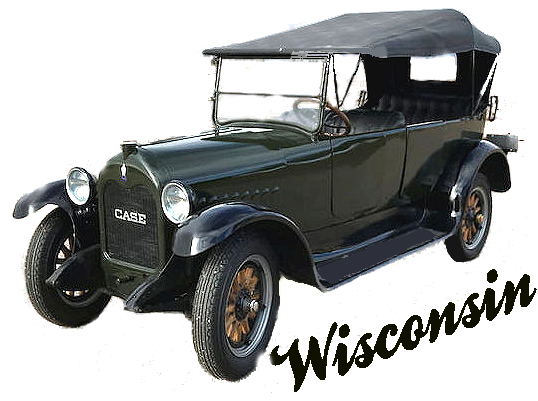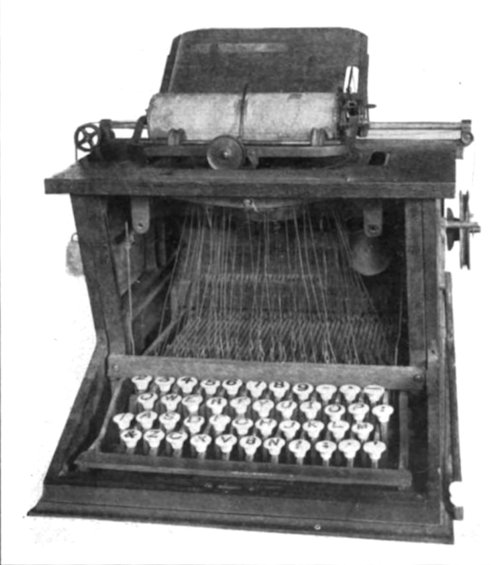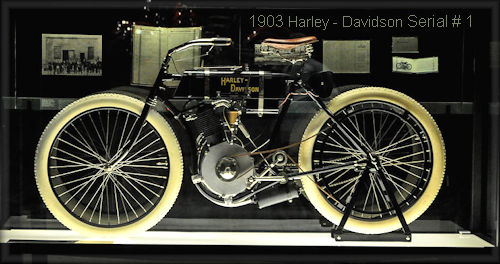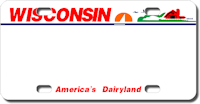


Mobile users:
For best results, view in Landscape mode.
Wisconsin became a territorial
possession of the United States
in 1783 after the American
Revolutionary War.
In 1787, it became part of the
Northwest Territory.
Wisconsin was admitted to the union as
the 30th state on May 29, 1848.
In 1961, Wisconsin became the first
state to have a Seat Belt law in
the U.S.
It was required that seat belts be
on the front seats of all new cars
sold in the state beginning with
the 1962 models.
In 1933, auto workers in Kenosha
unionized, two years before the
United Auto Workers was formed.
In 1886, the first Successful Electric
Commercial Streetcar in the U.S. was
operated in Appleton, Wis.
Milwaukee followed suit in 1890.
The city’s delay was because electricity
was still a novel concept.
Many feared electrified streetcars were
dangerous and would turn the city
“into a regular angel factory.”
Of course, the streetcars didn’t
electrify people.
The streetcars would go on to alter Milwaukee
and the nation, changing how Americans
built their cities, lived, and conducted
business.
The streetcar also allowed people to live
further away from the hustle and bustle
of the city.
Eventually all the streetcar lines became
trackless and those later yielded entirely
to the city buses we know today.
The last streetcar ran on March 2, 1958.
In 1882, the world's first Edison
hydroelectric power plant began
operation on the Fox River in
Appleton, Wis.
In 1920, only about 35% of American
households had electricity.
By the end of the 1920's, about
85% of Americans had electricity.
In 1917, the first Highway Numbering
System was created in Wisconsin,
this highway numbering system was
later adopted nationwide.
In 1905, Wisconsin first required its
residents to register their motor
vehicles and display license
plates.
In 1899, Arthur Oliver Smith
(A. O. Smith Co.)
manufactured the first steel
automobile frame in Milwaukee.
In 1906, the A.O. Smith Company made
it big by producing 10,000 frames in
4 months for Ford Motor Company.
Arthur O. Smith and his son Lloyd provided
the "framework" for Henry Ford’s first
mass production success.
When Henry Ford asked A.O. Smith to build
10,000 steel auto frames in just 4 months,
Smith replied, “That’s what we’re here for.”
At the time, Smith Company was producing
only 10 frames per day.
Smith retooled his entire operation to
manufacture 100 frames per day and
Ford received his 10,000 frames on time.
In 1921, Arthur's son, L.R. Smith unveiled
the world’s first automated frame assembly
plant.
Producing a frame every 8 seconds
(10,000 frames a day), the plant was
called “the mechanical marvel.”
The automobile frame plant operated
until 1958.
A. O. Smith Corporate Headquarters
is still located in Milwaukee today.

In 1869, the first typewriter was
invented by Milwaukee newspaperman
Christopher Latham Sholes.
The rights for his invention were
sold to Remington Company.
In 1873 he created the QWERTY
keyboard layout we're familiar
with today.
It did not contain keys for the numerals
0 or 1 because the letters O and I were
deemed sufficient.
In 1949, Joseph Zimmerman of
Milwaukee invented the first telephone
answering machine, known as the
“Electronic Secretary.”
The Electronic Secretary used the then
state-of-the-art technology of a 45 rpm
record player for announcements and a
wire recorder for message capture and
playback.
In 1885 Flag Day was originated
in Wisconsin.
Stoney Hill School in Ozaukee
County, teacher Bernard J. Cigrand
and his students celebrated
the birthday of our flag,
June 14, 1785.
National Flag Day was proclaimed by
President Woodrow Wilson in 1916.
President Harry S. Truman signed
the legislation in 1949 and June 14th
was properly designated Flag Day.
On June 14th, 2004, the U.S. Congress
voted unanimously that Flag Day
originated in Ozaukee County,
Waubeka Wisconsin, 60 years
after Truman.
In 1922, Racine native Stephen J.
Poplawski invented the first blender,
which became the Osterizer.
His product was sold in drugstores
and used for malted milkshakes
for many years in Wisconsin.
In 1881, druggist Edward Berner of
Two Rivers, invented the Ice Cream
Sundae.
In 1933, another Racine inventor,
Frederick Osius, founder of the
Hamilton Beach Manufacturing Co.,
worked on his own model of
the blender.
In 1927, the first kitchen garbage
disposal was invented in Racine
by John W. Hammes, who worked
as an architect.
Hammes is credited with inventing
the "in-sink" food waste disposal
for his wife.
The InSinkErator Company is the
world’s largest manufacturer of garbage
disposals and instant hot water dispensers
for home and commercial use and is still
headquartered in Racine today.
In 1883, the first enameled cast-iron
plumbing fixtures was manufactured
by John Michael Kohler.
The Kohler Company is still based in
Kohler, Wi ( Sheboygan County ).
Kohler is best known for its
plumbing products, but the company
also manufactures furniture,
cabinetry, tile, engines, and
generators.

Harley Davidson:
In 1903, William Harley and the
Davidson brothers (Walter and
Arthur) build their first motorcycle
in Milwaukee.
In 1909, Harley-Davidson introduces
its first V-twin engine
Their world Headquarters is still
in Milwaukee.
In 1934, Les Paul of Waukesha
invents the first electric guitar.
In 1935, the Hamilton Manufacturing
Company of Two Rivers, Wi
(Manitowoc County )
produced the first automatic
clothes dryer.
In 1856, the first kindergarten in the
U.S. was opened by Margarethe
Meyer Schurz in Watertown.
Palmolive is one of the most recognized
soap brands in the world.
In 1864, he B.J. Johnson Soap Company
was established in Milwaukee.
In 1898, the company introduced Palmolive
soap a formula created by the company
that included palm and olive oil.
In 1928, Colgate merged with the
Palmolive-Peet Company.
In 1953, the companies became known
as the Colgate-Palmolive Company.
In 1883, Warren S. Johnson, a professor
in Whitewater received a patent for the
first electric room thermostat.
In 1885, the Johnson Electric Service
Company was created to manufacture,
install and service Johnson’s product.
Johnson continued to invent additional
control devices, as well as products such
as chandeliers, spring-less door locks,
puncture-proof tires, thermometers, and
a hose coupling for providing steam heat
to passenger rail-cars.
He also designed pneumatic tower clocks,
one of which was built for the Milwaukee
City Hall tower.
This company still exists in Milwaukee
today as Johnson Controls.
Did you know?
Minnesota's state slogan is
'The Land of 10,000 Lakes'.
Did you know that Wisconsin
has more?
Wisconsin has well over 14,000
lakes and over 7,000 rivers and
streams.
Door County, Wisconsin has more
shoreline than any other county
in the U.S. - over 250 miles.
The Swiss Cheese Capitol of the World
is not in Switzerland, it’s located in
Monroe Wi.
Marathon County produces nearly all of
the ginseng grown in the U.S. and about
10% of the world’s supply.
Barbie hails from the fictional town
of Willows, Wis.
The Republican Party, founded on
March 20, 1854, by anti-slavery
activists in Ripon.
During the Civil War, around 91,000
troops from Wisconsin fought for the
Union.
Wisconsin’s state symbol, the badger,
actually refers to lead miners in the
1820's, not the animal.
At the time, miners would travel a lot for
work and often did not have shelter.
When it grew colder, the workers would
dig holes to sleep in, not unlike badgers.
Also did you know?
Margarine was once illegal in Wisconsin.
After all, we are the Dairy State.

Sorry California, but Wisconsin
is "America's Dairyland". (LOL)
In 1897, in order to protect that dairy
industry, margarine colored yellow to
look like butter was banned in the state.
While the law was repealed in 1967, it
remained illegal for public places such as
restaurants and prisons to use the butter
substitute, unless they also served butter.
These restrictions were lifted in 2011.
